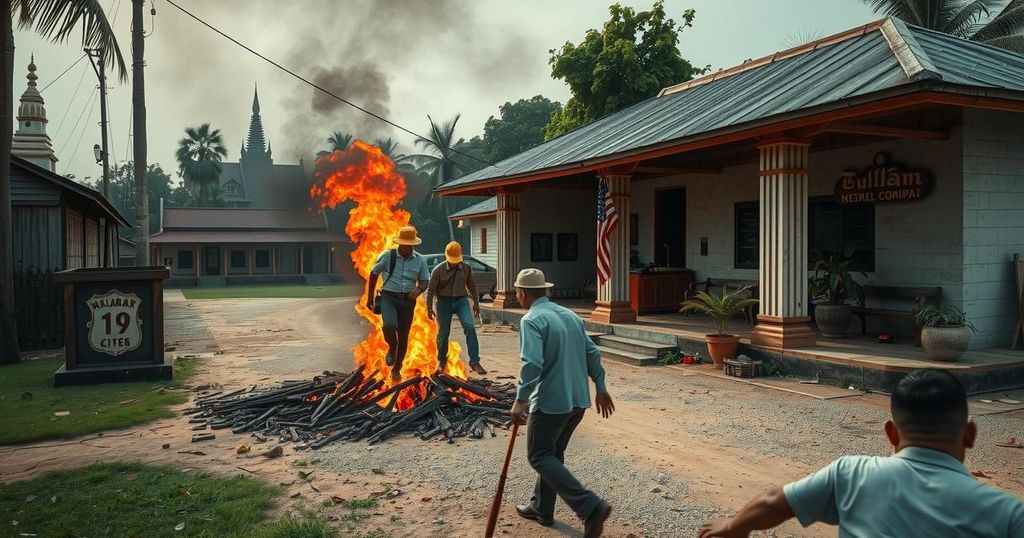The Cambodian Civil War followed Prince Sihanouk’s removal in 1970, leading to a power struggle with Lon Nol’s regime, which was eventually overthrown by the Khmer Rouge. Under Pol Pot, Cambodia underwent radical social changes, resulting in catastrophic consequences, including the deaths of approximately 1.5 million people. This period, marked by extreme brutality and repression, reflected historical patterns of genocide and collective punishment.
The Cambodian Civil War commenced with Prince Sihanouk’s ousting in March 1970, leading Lon Nol to seize authority. In response, Sihanouk formed a government-in-exile that allied with communist forces against Nol. While initially popular for pledging to expel Vietnamese troops, Nol’s regime soon faced military setbacks as Cambodia became embroiled in the Vietnam War. By 1973, Cambodian communists, gaining dominance, effectively supplanted Sihanouk’s influence.
In April 1975, the Lon Nol government definitively collapsed under the weight of communist forces, who emptied Phnom Penh in a swift evacuation. Subsequently, the Khmer Rouge initiated radical transformations known as Democratic Kampuchea, eliminating currency and private ownership, while enforcing a regime that led to widespread famine, overwork, and decimation of the population. Led by Pol Pot, the operation resulted in the deaths of an estimated 1.5 million Cambodians from starvation, disease, and executions, paralleling historical tragedies from Stalin’s collectivization to the Holocaust. The brutality of the Khmer Rouge and their systematic purging of any perceived enemies marked one of the darkest periods in Cambodian history, making their atrocities known globally posthumously through the lens of cinema and continued discourse.
The Cambodian Civil War was a pivotal conflict that ultimately led to the rise of the Khmer Rouge, a radical communist regime. Following the removal of Prince Sihanouk, the schism between the communist forces and Lon Nol’s government escalated into a civil war, drawing in regional conflicts involving Vietnam. The subsequent establishment of Democratic Kampuchea under Pol Pot’s leadership represented an extreme ideological shift, leading to policies that devastated the Cambodian populace. Understanding the sociopolitical context of this era is crucial to grasping the motivations and consequences of the Khmer Rouge’s actions.
In summary, the Cambodian Civil War and the ensuing reign of the Khmer Rouge catalyzed one of history’s most tragic genocides. The transition from a monarchy to a brutal communist regime under Pol Pot resulted in unimaginable loss of life and societal upheaval. The legacy of these events underscores the dangers of extreme ideological pursuits and the importance of recognizing the signs of escalating violence and oppression in any societal context. Historical parallels reinforce the necessity for vigilance and remembrance to prevent recurrence.
Original Source: www.britannica.com






